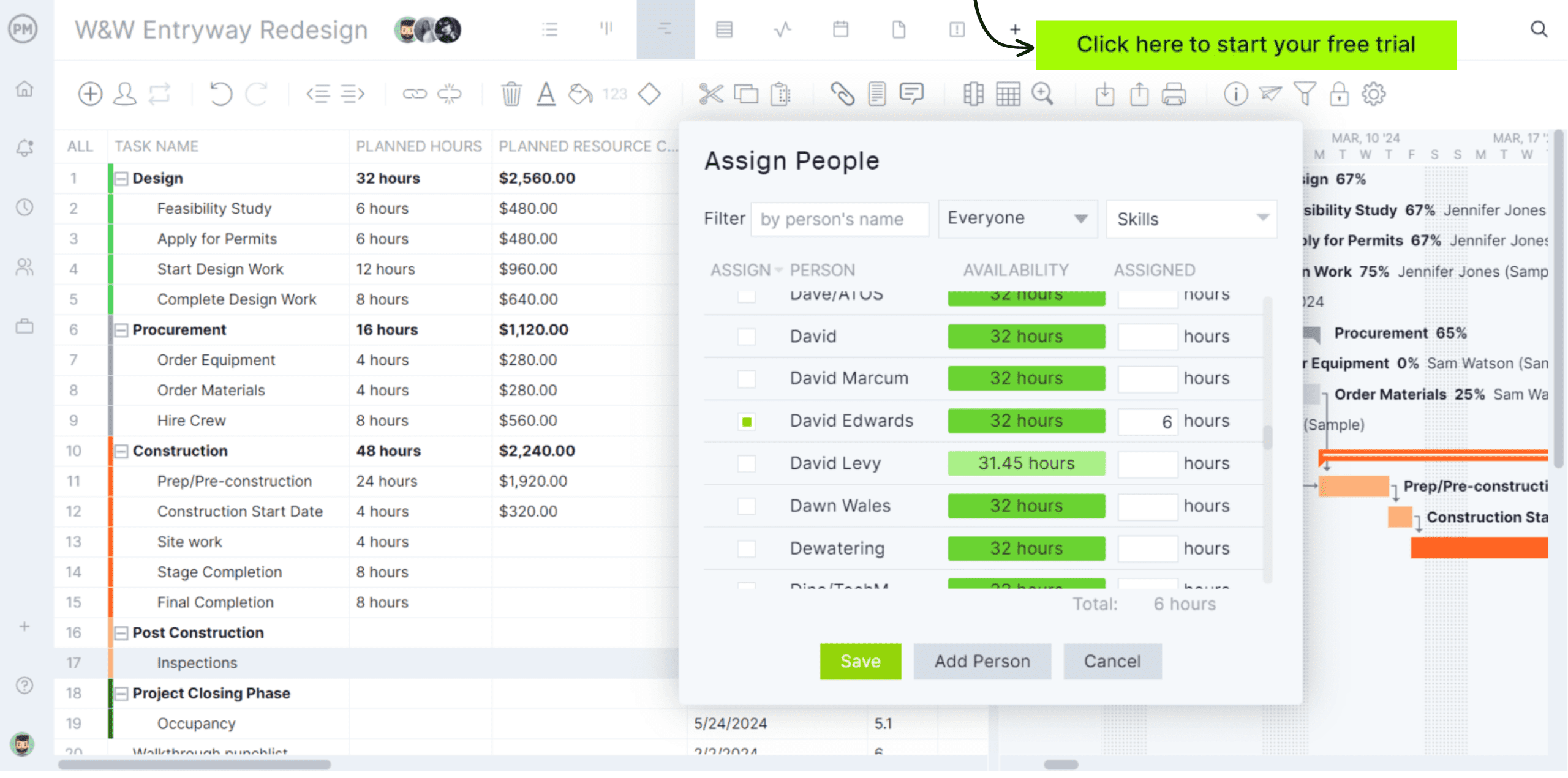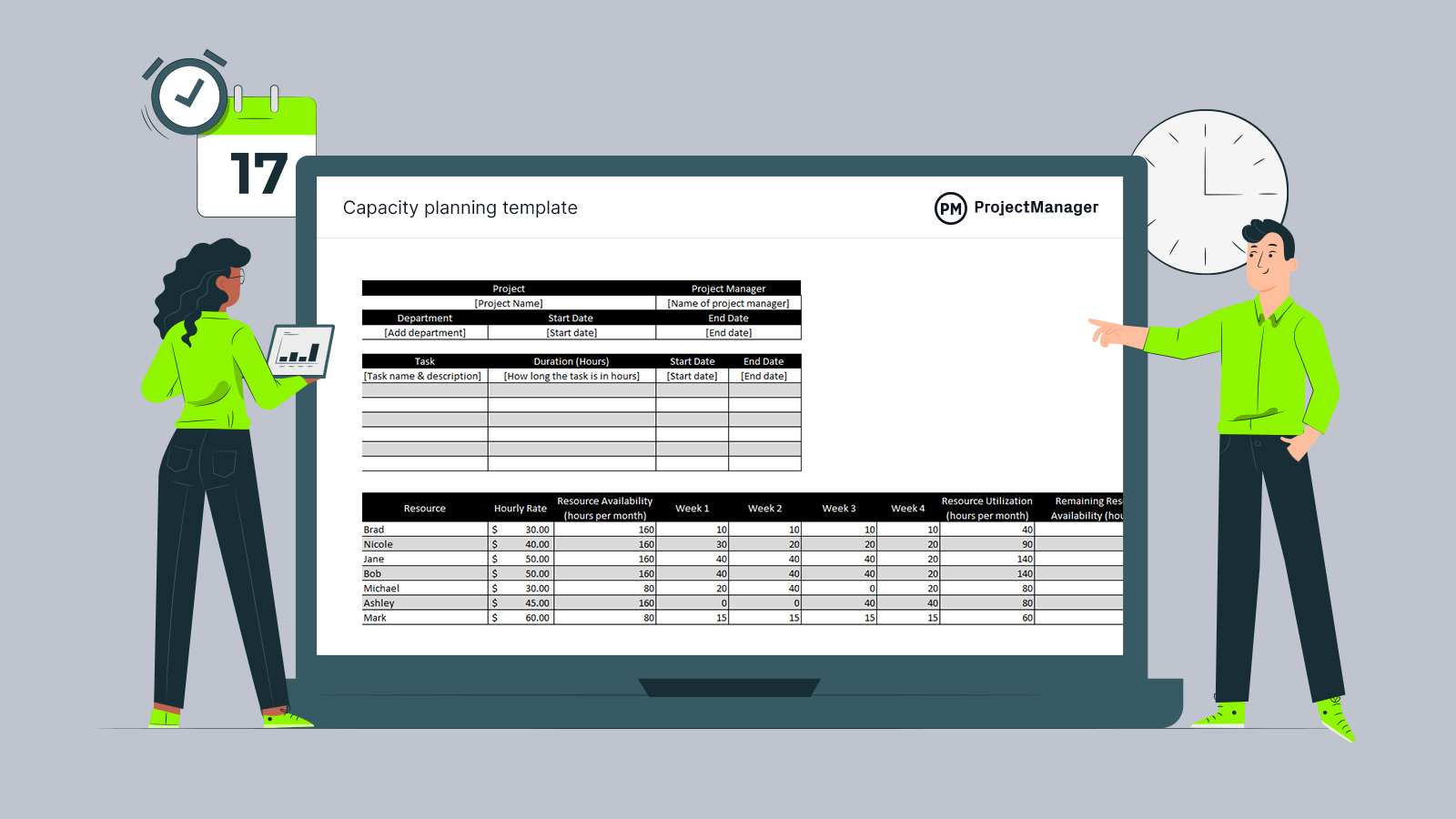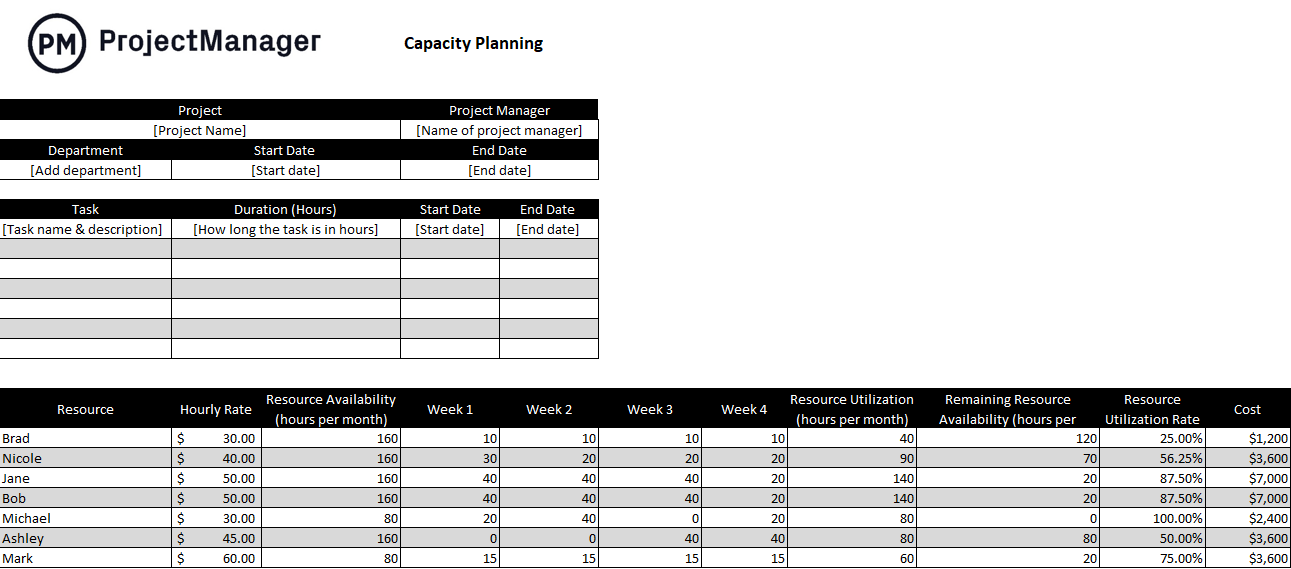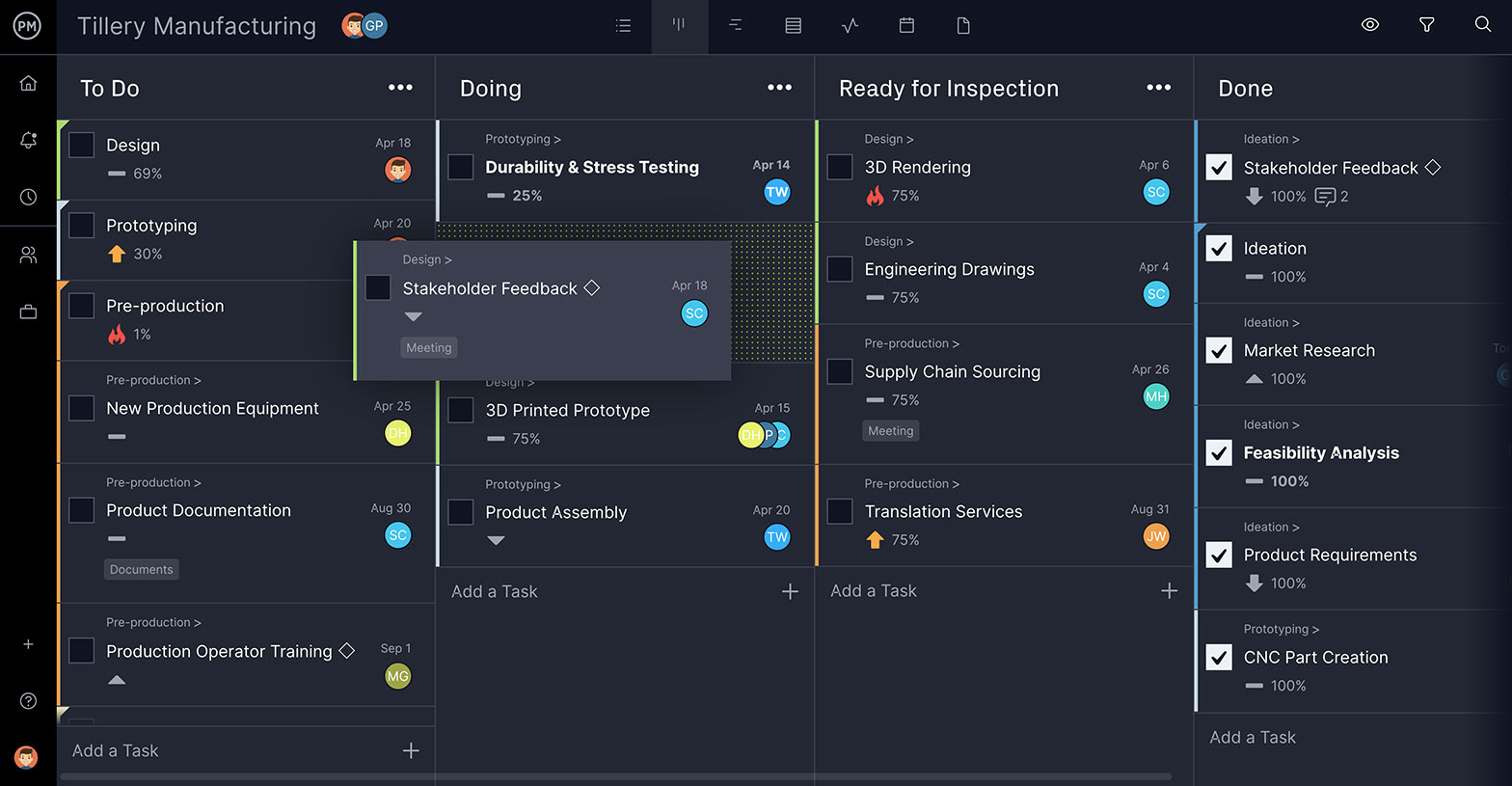Production capacity is an essential metric for manufacturers. It informs their production planning, helps them give their customers more accurate lead times and forecasts cash flow. To better understand production capacity, we’ll define the term and go into greater detail as to its importance in manufacturing.
Then we’ll explain how to measure production capacity and provide a couple of examples to better illustrate it. We’ll end with several ways in which manufacturers can increase their production capacity and how software can help with planning.
What Is Production Capacity?
Production capacity refers to the largest amount of goods that can be manufactured in a production facility over a period of time. It’s used to show the potential highest level of goods that can be produced with the current machines, labor and resources.
Knowing production is critical for manufacturers when making long-term and short-term production management decisions. It helps manufacturers with administrative and in-facility decisions and allows them to increase their production efficiency.
In order to take advantage of production capacity’s help with making sound financial plans and accurately forecasting business growth, you’ll need project management software. ProjectManager is award-winning project management software that helps manufacturers identify and map out resource usage. Use our robust Gantt charts to schedule resources and costs for specific tasks. Once you set a baseline, you can then track the plan against your actual effort to make sure you’re staying on schedule. Get started with ProjectManager today for free.

Why Is It Important to Measure Production Capacity?
There are many reasons to measure production capacity. Manufacturers need to give their customers an accurate estimate of the lead time so they know when to expect the goods they’re going to sell. The more accurate those estimates are, the greater customer satisfaction. The less accurate, the less customer satisfaction and the potential of eroding your customer base.
Another area that benefits from production capacity is scheduling. Manufacturers have to schedule their production lines to meet customer demand. Production capacity makes those manufacturers more informed about processes and that’s going to help with their decision-making as they respond to customer demand.
Manufacturers are also able to measure the capacity utilization rate by comparing the production capacity with the actual capacity from past periods. This leads to more efficient manufacturing processes and finds the balance between operation rate and cost per unit. It also helps indicate performance and can be used to motivate workers on the production line to meet production goals.

Get your free
Capacity Planning Template
Use this free Capacity Planning Template for Excel to manage your projects better.
How to Measure Production Capacity
Now that we understand the definition of production capacity and some of the advantages it gives manufacturers, let’s look at how to measure it.
1. Identify the Steps in Your Production Process
Every production is made up of steps that turn the raw materials into the finished product. Each step should be mapped out.
2. Determine the Cycle Time for Each Unit
Know the amount of time spent working on an item. This should be the time spent working from the raw material stage to the finished product stage.
3. Calculate the Machine-Hour Capacity
Now figure out the total amount of time that your workers can use the available machines to create the product by turning those raw materials into finished products. The formula to figure this out is:
Machine-hour capacity = number of usable machines * number of working hours
4. Use the Following Production Capacity Formula
Now, we’re ready to figure out production capacity by using this formula:
Production capacity = Machine-hour capacity / Cycle time for each unit
Production Capacity Examples
We’ve outlined how to measure production capacity, but the whole process can be further illuminated by providing a couple of real-world examples. Here are two.
- Box manufacturer: Acme Boxes makes cardboard boxes for shipping. Each machine on its production line can cut 20 units in an hour. The work shift for the factory is eight hours. Therefore, the production capacity is 160 units per machine per shift.
- Shirt manufacturer: Prince Shirts makes multiple shirt designs. The manufacturer has to fulfill an order of 50 shirts in one style and 70 in another. It takes eight hours to make the first style and 16 hours to make the other style of shirt. Multiplying the amount of shirts and the hours it takes to produce them gives you 1,520 working hours to complete the order. That’s your production capacity.
Capacity Planning Template
This free capacity planning template is ideal to estimate the human resources that a project will require in terms of time, human resources and costs. It allows you to assign work hours to your team members, track labor costs based on their hourly rate and then measure their utilization rate percentage based on the difference between the total available hours and assigned hours per month.

How to Increase Production Capacity
Being able to understand the production capacity of your manufacturing facility is important. It gives you an accurate duration for the work and the order fulfillment for your customer. However, manufacturers are always seeking greater efficiency without sacrificing quality, so they’re set on improving their production capacity.
This can help manufacturers meet an increase in demand or plan to increase production, whether for short-term or long-term spikes in demand. To do this, manufacturers follow these strategies.
Optimize Your Production Layout
Having a poorly organized factory can reduce production capacity. To get the most out of your production layout, first look at your current workflow and carefully examine your facility’s operations to identify areas for improvement. Bring your assembly line workers into the process and get feedback from them, as they’re on the front lines of production.
If your factory isn’t well organized, then work toward moving vital supplies closer to where they’re needed, keep items labeled and have a master sheet of all your equipment. It’s also important to invest in your workers and have them participate in continuing education to make sure everyone on the factory floor is doing their job and following best practices.
Reduce Machine Downtime With Total Productive Maintenance (TPM)
Total machine maintenance is a strategy in which everyone in the factory participates in maintenance as opposed to that duty falling only on a maintenance team. By doing this, all the skills of every worker are incorporated into the everyday performance of the factory. This includes everyone from managers to equipment operators, the former in promoting a corporate strategy and the latter in taking responsibility for the day-to-day maintenance of their machines. This leads to few breakdowns of machinery, a safer work environment and reduced risk as well as better overall performance. All of these advantages that come from TPM will lead to greater productivity capacity.
Find and Improve Bottlenecks In Your Production Cycle
Before you can improve production capacity, you must identify and resolve bottlenecks in your production cycle. Since project capacity is the maximum amount of output that you can manufacture over a period of time and a bottleneck is a stage in that production or resource that’s limiting your overall capacity, the fewer bottlenecks, the more production capacity. Analyze the causes and effects of bottlenecks on your production capacity by using flowcharts, value stream maps, Pareto charts, cause-and-effect diagrams or simulation models. This allows you to pinpoint the location, frequency and severity of the bottlenecks as well as their root cause and consequences.
Use Lean Manufacturing Techniques
One metric of lean manufacturing tracks is production capacity because the goal of the methodology is to reduce waste and produce only what’s needed. Waste, in terms of lean manufacturing, is anything that doesn’t add value to the customer. Therefore, lean manufacturing techniques help production operations run as efficiently as possible and that’ll improve production capacity. That’s because lean manufacturing works towards having all inputs ensure that machines and workers are delivering more products.
Maximize Your Capacity Utilization Rate
Capacity utilization rate is the percentage of potential output that’s actually being produced. It provides insight into how well a manufacturer is meeting their potential. To get the capacity utilization rate, use this formula;
Capacity Utilization Rate = (Actual output / Potential Output) x 100
By making this calculation, manufacturers get insight into the value of production and the use of resources, which can help them deal with a rise in product output without having to increase costs.
How ProjectManager Helps With Production Capacity Planning
Another way to increase production capacity is the use of project management software. ProjectManager is award-winning project management software that helps manufacturers see their team’s workload and availability. Our software provides manufacturers with real-time data through reporting and dashboards that give them valuable data to help measure production capacity, find bottlenecks, prioritize and more.
Plan With Multiple Views
Our powerful Gantt charts are useful with scheduling resources, but once production occurs you can toggle over to the kanban board view, which is fully customizable to reflect your production cycle. It allows manufacturers to visualize their workflow and managers can identify bottlenecks and reallocate resources to remove them before they can cause delays. Kanban boards also help make customer fulfillment more accurate by knowing in real time where the production is and when it’ll be finished and delivered to customers.

Track Costs, Progress and Workload With Real-Time Dashboards
Being able to track key performance indicators (KPIs) in real time allows manufacturers to make more insightful decisions when planning production capacity and managing it during production. Our live dashboard captures planned vs. actual costs, progress, workload and more, all displayed in easy-to-read graphs and charts for a high-level overview of the production line. Unlike lightweight tools, there’s no time-consuming setup required. Our real-time dashboard is ready whenever you need it.

Our software also has resource management features that let you set the availability of your workers, including PTO, vacation time and even global holidays. You can also list each person’s skills. This makes assigning tasks easier. Once assigned, switch over to the color-coded workload chart to see who is overallocated and then balance workload right from that chart to keep everyone working at capacity.
Related Production Management Content
There’s a lot to learn about each area of the scope of production management, which is why we’ve created dozens of blogs, templates and guides to help you streamline the production process of your organization.
- Production Schedule Template for Excel (Free Download)
- Production Tracking: Monitoring the Success of Your Manufacturing Process
- Production vs. Manufacturing: Key Differences
- How to Make a Production Flow Chart for Manufacturing Processes (Example Included)
- How to Make a Production Order for Manufacturing
- Batch Production: Examples, Advantages and Disadvantages
- ¿Cómo Calcular La Capacidad de Producción? (Con Fórmula y Ejemplos)
ProjectManager is online project management software that connects teams, managers and more in real time. Our tool allows everyone to stay updated, share files and comment at the task level. Get started with ProjectManager today for free.


